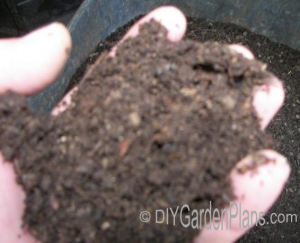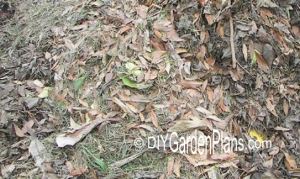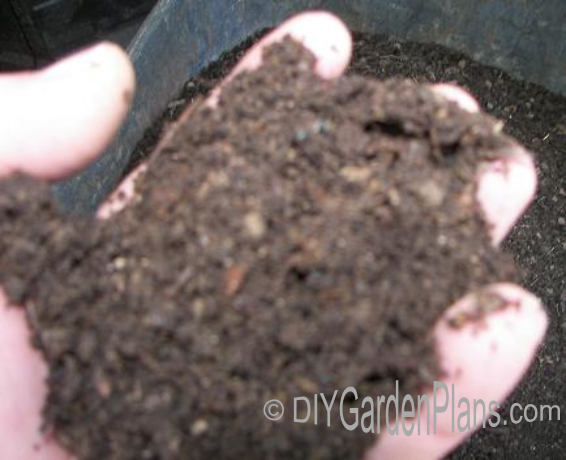
By recycling certain lawn material , garden debris and specific types of food scraps you can produce a rich natural fertilizer that is filled with nutrients. You can have ready to use compost faster by speeding up the decomposition process.
Compost is not dirt by any means. It is a rich organic fertilizer, that helps the soil make superior quality soil for lawns, plants and vegetable gardens.
Knowing how to compost will require knowing what steps to take. Some things to consider will be: Will a compost bin be required? What material will be used? Where should the compost pile be located? Keep in mind, how waste is made into compost will be the same regardless. It is a breakdown of waste as they are digested by microbes, bacteria and fungi.
The microbes are the ones that make the magic happen. You will need to provide them with air, water, and food so they can get the job done. A compost pile will give a foul odor only if there is no sufficient air passing through the waste pile. Decomposition will still occur without air, but by different organisms, anaerobic microbes, these are microbes that need no air. If the pile starts to smell, you can turn the material with a pitch fork to allow air. Also add dry leaves, wood chips or hay to allow pockets for air circulation.
The Benefits of Composting
Besides organic fertilizer for your soil, there are many other benefits to making compost. A few of the benefits of composting are:
- You can reduce or eliminate weeds in your garden by using compost as it prevents weed seeds from sprouting and prospering. This is a natural alternative to pesticides.
- Mature compost material has been used to stop or prevent erosion in certain areas. The binding capability in the compost can keep the soil in place and prevent dangerous drop-offs.
- Reducing the amount of organic material that goes to a dump unnecessarily – in turn this reduces the amount of methane gas a dump creates during decomposition.
- In wetlands areas that are in trouble, compost has been used to revitalize the soil and surrounding plant life.
- Healthier plants, compost material can prevent your plants from contracting diseases that kill or spread to the rest of the crop or garden.
- Can create a stable and healthier pH balance in your soil.
- If your soil is overly dry (sandy), adding compost to the soil and thoroughly mixing can help the sandy dirt retain more water keeping it moist.
- If your soil is clay-like, you can make the dirt easier to work with and less dense by adding mature compost.
- Provides important nutrients and micro nutrients to the soil and plants.
- Increases the temperature of the soil creating a conducive environment for plant growth and health.
This is just a few of the important benefits that can be derived from using compost. It helps the environment, your garden, your plants and the planet. The small amount of time that it takes to set-up and maintain a compost bin or pile is well worth the time and effort.
Materials Needed to Start Composting

Most items to begin making a pile will be available in your own yard home.
Begin by picking a location for your compost bin or pile (ensure it is in an easily accessible) you are going to need approximately four inches of twigs or branches as a base. The quantity you will need to make a four inch base will depend on the size of the bin you have chosen.
Next start layering the food for the microbes to eat. There are two categories of food you are going to need, brown waste and green waste. A common ratio is two parts brown for every part of green.
Brown Material:
Leaves , branches, twigs, and sawdust are examples of Brown ingredients, but an item does NOT have to be brown to be a brown ingredient. Tree leaves, for example, are brown ingredients whether they’re dead on the ground or fresh from the tree. Brown ingredients are items that have a high content of carbon or carbohydrates. If you’re not sure if an item falls in this category, wet it, wait for a few days to let it start decomposing, and then smell it. If it does not smell bad, then it belongs in the brown category. If it stinks, then it belongs in the next category.
Green Material:
Grass clippings from your lawn, vegetable or fruit scraps from the kitchen, and even coffee grounds are green ingredients. Green ingredients are items that have a high content of nitrogen or protein. You can use the smell test described above to tell if an item falls in this category. If it stinks, it’s green.
You are going to need a spade or heavy-duty pitch fork to turn or rotate the compost at least once per week. Add water to keep the pile moist, not to wet, only moist like a rung out sponge.
With such simple materials and start-up instructions, anyone can start their own compost pile in under a day. If you choose to not use a bin, consider buying some wire mesh to contain the pile, it can be wrapped around the base of the pile in a circular shape. The compost can be ready anywhere from a months or up to one year.
What Not to Compost
There are many things you can use to make good compost. There are also quite a few items that should never go into your compost bin. Listed below are many of the materials you should not try to compost.
Ashes from charcoal should not be added to your compost, you can add very small amount of ashes from a fire that was made with untreated wood. It is not a good idea to add a lot though because it can change the composition and make it too alkaline.
Do not add any kind of droppings from an animal that is not a vegetarian. Animals that pass the compost inspection include horses, cows, rabbits, and goats. You can even add droppings from hamster or other indoor pets. But stay away from bird, dog, and cat droppings (including cat litter). They all can contain harmful organisms.
Any type of animal waste such as leftover meat, oil, bones, or fish waste are off-limits. They all can cause your pile to smell badly and can attract unwanted pests.
Milk, yogurt, cheese, or any other milk product should be added with caution. They all will attract animals and pests. If you do decide to add them, do so in small amounts and cover them with plenty of brown material.
You can add weeds, but you should take care to ensure your composting is functioning properly. If your compost is not generating enough heat the weeds will not be destroyed and can grow again once you spread your compost. You can dry your weeds on a sidewalk or on some concrete before added to the pile as an added precaution to make sure they do not survive.
The Best Place for your Composting Bin
The most common location for a compost pile or bin is in close proximity to your kitchen or garden. You want it in a convenient location to make it easy and second nature to bring your food scraps or garden waste to the pile. If you have a large yard, the yard waste can get quite heavy and you don’t want to be transporting the heavy material.
There are other considerations that need to be taken into account when choosing a location. Keeping all the below suggestions in mind, you also want to make sure that it is in an area that children or animals will not disturb or get into the pile.

The ground should be level and not prone to collecting excessive water (it needs good drainage). Your compost pile needs to stay moist but you do not want too much water or it will not function properly. In addition to level ground, make sure you can easily access the area with a wheelbarrow.
A shady location will be ideal, if the compost pile gets too much sunlight it will get hot and dry
out. Again, the pile needs to stay moist.
A water source should be close by, you should be able to reach the pile with a garden hose or
easily carry enough water to moisten the pile if it becomes too dry. Remember you just want to moisten the pile with a spray of water not drench it.
If you are beginning with a one bin system, you may want to leave enough room for a second bin down the road. By having two bins side-by-side, you can easily rotate or turn the pile by moving material from one bin to the next.
Types Of Compost Bins
There are many sizes, shapes, and styles of compost bins to choose from. If you don’t want to purchase anything, you can simply make a pile or build a bin from scrap materials.
A compost tumbler is a cylindrical shape much like a drum laid on its side. It can be turned on a base that is supported on the flat ends. When you spin the drum it will turn the material inside and give it the oxygen it needs. It is an easy and effective way to rotate your compost.
The bio-orb is a bin that will resemble a ball, it can be available at home improvement centers in various of sizes. The benefits of this type of container is the ease of getting it around, it will roll very easy to any area you need to pick up waste and then rolled back to its spot, and as you roll you will be turning and giving the material the air that is needed. This bin will also have small holes for ventilation to let air flow in and out.
A wood box frame with the sides made out of wire mesh and one side with hinges to make one of the sides open can easily be built or bought. If you got four pallets that have no use, you can strap them together with wire to create a compost bin that is very inexpensively.
Also you o just buy some wire mesh at any home improvement depot or hardware store to make a bin fast and inexpensively. These types of bins will let air flow in and out of the pile as long as the material is not compressed.
If you do not want to use a bin, make a pile with grass clippings, fruits, vegetables, dry leaves and other organic material. As you add more material and the pile gets bigger, make sure to turn it with a pitchfork once or twice a week. Be warned though, it is not as easy to turn a pile that is not contained. The pile can be difficult to contain in a certain area, as it will spread wider and wider when turned or more material is added.

